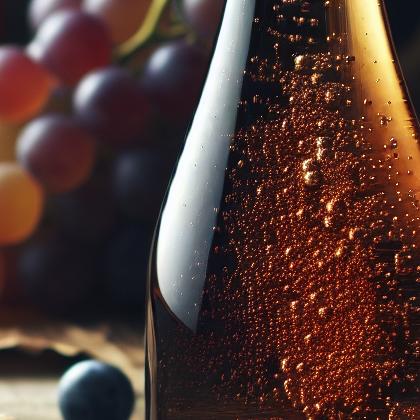Champagne Vinegar

Champagne (French: [ʃɑ̃.paɲ]; English /ˌʃæmˈpeɪn/) is a sparkling wine produced from grapes grown in the Champagne region of France following rules that demand secondary fermentation of the wine in the bottle to create carbonation. Some use the term champagne as a generic term for sparkling wine, but the majority of countries reserve the term exclusively for sparkling wines that come from Champagne and are produced under the rules of the appellation.The primary grapes used in the production of Champagne are black Pinot noir and Pinot Meunier, and white Chardonnay. Champagne appellation law only allows grapes grown according to appellation rules in specifically designated plots within the appellation to be used in the production of Champagne.Royalty became associated with Champagne in the 17th, 18th and 19th century. The leading manufacturers made efforts to associate their Champagnes with nobility and royalty through advertising and packaging, which led to popularity among the emerging well-off middle class.
Champagne vinegar Properties:
| Food Property | Type | Description |
|---|---|---|
| Flavor Profile | Sour | Champagne vinegar has a distinct sour flavor similar to white wine vinegar, with a slightly fruity and floral note. |
| Texture | Moisture | Champagne vinegar is a liquid with a relatively low moisture content. |
| Nutritional Value | Macronutrients | Champagne vinegar is low in macronutrients such as carbohydrates, fats, and proteins. |
| Micronutrients | Champagne vinegar may contain small amounts of micronutrients such as potassium and iron. | |
| Phytochemicals | Champagne vinegar may contain phytochemicals derived from the grapes used in its production. | |
| Aroma | Volatile Compounds | Champagne vinegar has volatile compounds that contribute to its characteristic aroma, which is often described as light and delicate. |
| Chemical Composition | Acidity/Alkalinity (pH) | Champagne vinegar has a moderately high acidity level with a pH range of around 4.0 to 4.5. |
| Cooking Behavior | Heat Conductivity | Champagne vinegar does not conduct heat and is typically used as a finishing or seasoning ingredient rather than in cooking processes. |
| Water Retention | Champagne vinegar may add moisture to dishes when used in marinades or dressings. | |
| Oil Absorption | Champagne vinegar may absorb some oil when used in vinaigrettes or emulsified dressings. |
Food Pairing App - Version 1.2.0
